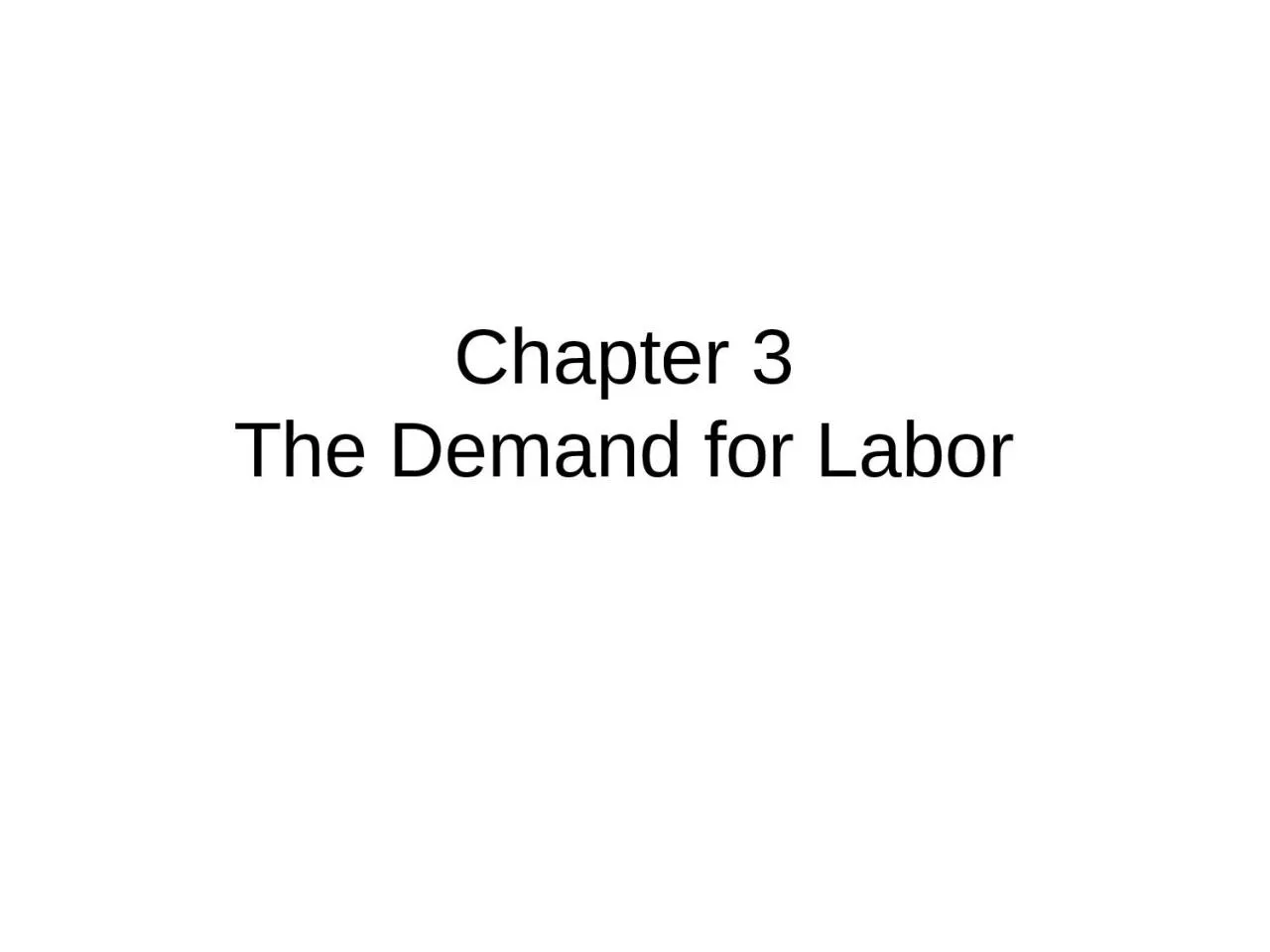

Short Run Labor Demand Short run short enough period of time that capital is fixed Marginal Product of Labor MP L increase in output Q from adding one unit of labor L holding other inputs constant ID: 1027848
Download Presentation The PPT/PDF document "Chapter 3 The Demand for Labor" is the property of its rightful owner. Permission is granted to download and print the materials on this web site for personal, non-commercial use only, and to display it on your personal computer provided you do not modify the materials and that you retain all copyright notices contained in the materials. By downloading content from our website, you accept the terms of this agreement.
1. Chapter 3The Demand for Labor
2. Short Run Labor DemandShort runshort enough period of time that capital is fixedMarginal Product of Labor (MPL ) increase in output (Q) from adding one unit of labor (L), holding other inputs constant.Law of Diminishing Marginal ReturnsHolding other inputs constant, as the amount of a single input increases, its marginal product will eventually decrease.Marginal Revenue (MR) increase in total revenue (TR) from producing one more unit of output.
3. Short Run Labor DemandMR for a firm identical to price if firm sells its product in a perfectly competitive industry.MR=P(1-1/e) where e=elasticity of product demand if firm faces a downward sloping product demand curve. [e expressed as positive number.]If firm sells product in a perfectly competitive industry, e is infinite and MR=P.As a firm increases the sales of its product, MR generally falls. The steeper the product demand curve is, the steeper the MR curve.
4. Short Run Labor Demand D=MRPerfectly competitive product marketDMRMonoplistic product marketRelationship between product demand and MR
5. Short Run Labor DemandMarginal Revenue Product of Labor (MRPL)increase in total revenue from adding one more unit of labor, ceteris paribus.MPL* MRMRPL will fall as L increases for 2 reasons: MPL decreases as L increases due to Law of diminishing marginal returns MR falls as L (and output) increases unless the firm is in a competitive product market.
6. Short Run Labor DemandMarginal Expense of Labor (MEL ) increase in total cost (TC) from adding one more unit of labor DTC / DLIf a firm is in a competitive labor market, MEL=W If firm is in a monoposonistic labor market MEL>W.
7. Short Run Labor DemandCompetitive labor market
8. Short Run Labor DemandMonopsonistic Labor Market
9. Short Run Labor DemandProfit maximization: L where MRPL = MEL
10. Short Run Labor DemandAssume competitive product and labor markets Analyze the effect of an increase in product demand onemployment in market, at firm.firm profits (change in area between MRPL and MEL)labor’s rents (area between W& LS)Analyze the effect of an increase in labor supply onemployment in market, at firm.firm profits
11. Short Run Labor DemandUse short run supply/demand model to discuss winners/losers from:More open immigration lawsNAFTA/CAFTAIncrease in minimum wage
12. Long Run Labor DemandIn the LR, all inputs can be varied. Assume two inputs: L and K. In the LR, the profit maximizing conditionMRPL = MELMRPK = MEKIf the firms purchase their labor and capital in competitive markets,MEL = WMEK = C. where W=wage rate C =cost per period of a unit of K.
13. Long Run Labor DemandIf the firms sell their products in competitive product markets, MRPL=P*MPL MRPK=P*MPK Using these facts, the profit maximizing conditions can be rewritten as: P*MPL = W P*MPK = CWhich can be rewritten as: W/MPL = C/MPK = P
14. Long Run Labor DemandLong run effect of an increase in price of capital on labor.substitution effect: for every given level of output, use more labor and less capital.scale effect: an increase in price of capital reduces product supply, reduces equilibrium quantity produced, and reduces amount of labor employed.L & K are gross substitutes if subst effect > scale effect gross complements if subst effect < scale effect
15. Long Run Labor DemandWhen there are more than two inputs, any pair can be classified as gross substitutes or complements depending on whether the scale or substitution effect dominates.
16. Long Run Labor DemandOther Applications of Labor Demand Models.Minimum wages and monopsony.Effect of a payroll tax.does it matter whether tax is levied on employer or employee?how does the elasticity of labor supply affect incidence of tax?how does the elasticity of labor demand affect incidence of tax?Effects of employment subsidies.given to employers.given to employees.Financing medical payments for black lung disease.tax on coal workers' wages (surface versus land)tax on coal (unions versus management)